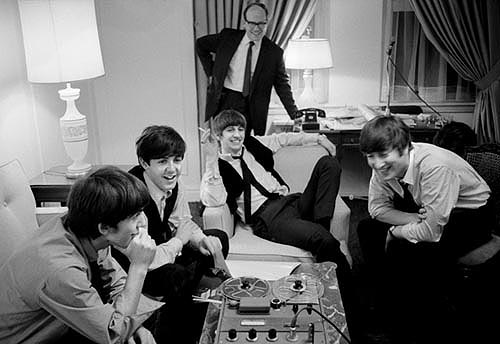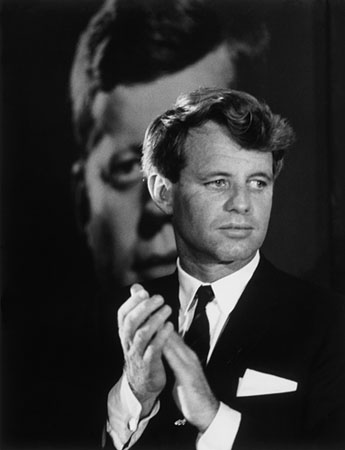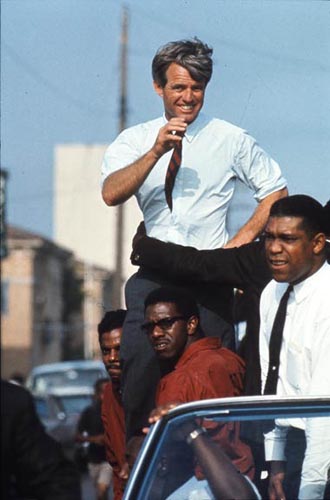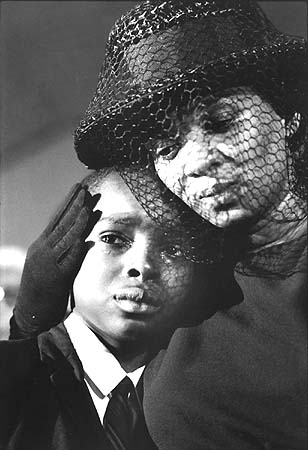History, Lived and Documented
November 4, 2011 | Source: Monroe Gallery of Photography

The Beatles at the Plaza Hotel, February 7, 1964 Bill Eppridge
©The Albuquerue Journal North
By Malin Wilson Powell
on Fri, Nov 4, 2011
Ignorance of history, like many omissions, happens effortlessly and silently in the contemporary barrage of day-to-day life. The photojournalism of Bill Eppridge is a sobering reminder of the necessity of a common history to a civilized society. The Monroe Gallery is presenting three major Eppridge photo essays from the tumultuous '60s when he was on assignment for Life magazine (1961-1972), plus a smattering of individual iconic images up to 2007.
One of the most striking aspects of Eppridge's work is his impeccable instinct for orientation. Eppridge's photographs bear witness to his ability for in capturing powerful images by constantly honing and adjusting his physical and ethical compass. He not only finds the right place to frame the uncertainties of life unfolding in front of him, but he does this by continually refining the right frame of mind. This holds true whether he might be hanging out of a helicopter with his editor holding onto his ankles, or "sticking with" the Beatles on their first 1964 American tour, or whether he could keep his bearings in the most extreme and devastating situation - Robert Kennedy's assassination on June 5, 1968.
Bobby Kennedy's extraordinary vitality and traumatic death were clearly defining experiences for Eppridge, who never accepted another political assignment after the senator's death. His first assignment with Bobby Kennedy was in 1966 when the young politician was testing the waters for a presidential bid in 1968. During this grueling eight-month campaign Eppridge took thousands of photographs in both black-and-white and color, always "staying close" to the candidate every single day and night.

Bill Eppridge ©Time Inc.
The access, rawness and intimacy of Eppridge's photos are hard to comprehend while immersed in today's packaged news. As the photographer has noted, "The press is controlled in such a way today that you almost never see the real person you are photographing. You're taking pictures of what their handlers want you to see."
Everywhere Bobby Kennedy campaigned he insisted on a convertible to greet the eager crowds. Looking at his exposure and absence of security, the question arises: How could he do this after his brother John's death in Dallas from a sniper while riding in a convertible? Yet, here are images of Bobby's courage and enthusiasm for meeting his supporters. His hands and arms reach for them with an appetite as strong as theirs reaching for him. In a time when politicians demonstrate so much disdain for the average voter, these photographs are riveting proof of mutual openness, respect, even admiration.

The Kennedy campaign travels through the Watts section of Los Angeles on the last day before the primary, 1968
For anyone who lived through the '60s and the repeated blows of the assassinations of John Kennedy, Martin Luther King and Bobby Kennedy, their bankrupt slaughter still reverberates. Bobby was shot on the last night of his campaign, the evening he won the all-important California primary and when exhausted he left the press of the crowd by way of the Ambassador Hotel kitchen, where Sirhan Sirhan shot him and five others. Only 12 feet away, and almost certainly unhinged by the mayhem, Eppridge's eye was steady and he remembers thinking: "You are not just a photojournalist; you're a historian." His photograph of the wounded senator is often described as a modern Pieta. It cannot be seen too often.
This is also true of Eppridge's photo essay "Mississippi Burning: The James Chaney Funeral." James Chaney was the one black civil-rights worker along with two young white civil rights workers who were kidnapped and murdered during "Freedom Summer" by the Ku Klux Klan on June 21, 1964. They were investigating the burning of Mt. Zion Methodist Church, a civil-rights training site. After an intense 44-day search, the bodies of Chaney, Andrew Goodman, and Michael Schwermer were found under 25 feet of dirt at a nearby earthen dam.
The dignity and sorrow that seep from Eppridge's photos of the Chaney family bespeak wounds that can't be healed. Suffused with an unflinching, upright gravitas, gallery viewers are noticeably stilled as they process through this deeply affecting black-and-white series: they whisper and stand taller. Not only is there the great graveside photo of Ben Chaney, the younger brother, shedding a tear in the embrace of his mother, there is an especially eerie photo of a troubled Ben looking straight at the camera, all alone with his grief in the middle of the image, bracketed by his parents and three sisters steeped in their own thoughts. Because of death threats, the Chaneys left Meridian, Miss., for New York City, and by 1969 Ben Chaney had joined the Black Panther Party. After 13 years in jail, he was paroled and has since established a foundation in his brother's honor and worked as a legal clerk for former U.S. Attorney General Ramsey Clark, who secured his parole. As the gallery text notes, only one of the 10 men responsible for the murders was prosecuted and incarcerated by the state of Mississippi, and that was in 2005.

Mrs. Chaney and young Ben, James Chaney funeral, Meridian, Mississippi, 1964
©Bill Eppridge
Eppridge has written eloquently about his craft and his art, including the unimaginable freedom his generation of photographers had to pursue truth during the 1960s golden era of photojournalism, inserting such anecdotes of a robust participant/observer as the perfect, unchoreographed ballet of a three-man CBS crew filming the Bobby Kennedy motorcade while in motion.
Looking back, the '60s were terrible and wonderful, and certainly fulfilled the Chinese adage "May you all live in interesting times." History is always in the making, but there aren't always visual historians of Eppridge's highly developed sensibilities to frame resonant and crucial junctures for posterity.
On Oct. 24, Bill Eppridge, born Guillermo Alfredo Eduardo Eppridge in Buenos Aires, Argentina, to American parents, was awarded the 2011 Lucie Award for Achievement in Photojournalism at Lincoln Center in New York. He is currently visiting Santa Fe and will be at the Monroe Gallery for a discussion of his work from 5 to 7 p.m. tonight.
If you go WHAT: Bill Eppridge
WHERE: Monroe Gallery of Photography, 112 Don Gaspar
WHEN: Through Nov. 20.
HOURS: 10 a.m.-6 p.m. Monday-Saturday and 10 a.m.-5 p.m. Sunday.
Gallery discussion with Bill Eppridge 5-7 p.m. tonight. Limited seating on a first-come, first-served basis.
CONTACT: 505-992-0800 or info@monroegallery.com
Tags: the 60's Civil Rights history The Beatles Lucies photography events 1960's Robert F. Kennedy Robert Kennedy assassination
